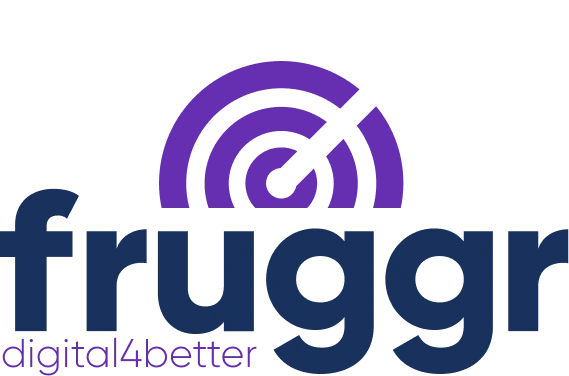At the age of climate change and digital transition, the challenge of a more sufficient and inclusive digital aligned with CSR, has become paramount. Considering that digital currently emits 4% of global GHG emissions and could reach 20% by 2025 at the current rate (according to Swedish researcher Anders Andrae) and that Europe is committed to the Green Deal. Digital Responsibility is presented as an approach to reconcile accessibility, inclusion and reduced environmental impacts while serving sustainable performance objectives. Fine, but where do you start? In this article, we present various French and international design tools.
1. Intro
For the past few months, responsible digital has been on everyone’s lips, in response to the growing awareness of public authorities and the private sector of the environmental and social impacts of digital technology. This awareness echoes the COVID-19 health crisis and its economic consequences.Strong trend or passing fad? This crisis has not only revealed the importance of our dependence on digital technology, but also its impact on the environment and social life. This period has also accelerated the digitalization of the economy, which in turn has made digital technology the spearhead of economic recovery and sustainable transformation of organizations.
Responsible digital technology has therefore gained momentum, as its principles and guidelines offer concrete ways to reconcile economic, societal and environmental resilience. Ecodesign, which might seem like a brake on this digital frenzy, is in fact a real opportunity for improvement. By being more inclusive and more responsible, digital can increase audience, reduce costs and improve performance.
Ecodesign is identified as one of the 7 pillars of the circular economy. It allows to optimize the use of resources used to create products and services, but also to better control production costs according to ADEME, French Agency for Ecological Transition. According to a study conducted in 2017, eco-design allows to:
- reduce costs by 20% and,
- increase sales by 7 to 18% by improving profitability.
Associations, collectives, and now the French government, have developed new standards to measure and take into account these impacts from the design stage. But what are these eco-design principles and how can they be applied? Here are the main guidelines.
The French government’s official framework for web ecodesign
The RGESN RG491: General Ecodesign Framework for Digital Services
Since 2020, the French government has wanted to make its digital public services eco-responsible. The beta version of the RGESN was launched in 2021 and the official version was announced in late 2022. It is to the DINUM (interministerial digital direction) that we can attribute its design, conducted as part of the interministerial mission “Green Tech” and co-piloted by the French Ministry of Ecological Transition, but also by ADEME and the Institute of Responsible Digital. It enables the environmental footprint of any type of website, computer system or application to be audited. Far from giving ready-made answers, it invites you to ask the right questions for each indicator, based in particular on the UN Sustainable Development Goals.
It includes 78 criteria and good practices under eight themes or stages (similar to the label of the Institut du Numérique Responsable – INR).
- Strategy
- Specifications
- Architecture
- UX/UI
- Content
- Front-end
- Back-end
- Hosting
Unfortunately, it is only available in french for now. Available here.
The RGAA “Référentiel Général d’Amélioration de l’Accessibilité” (FR)
Accessibility concerns people with disabilities, including the blind and visually impaired, the deaf and hard of hearing, people with learning disabilities, cognitive limitations, motor limitations, speech limitations, photosensitivity and people with a combination of these functional limitations.
More than 80% of websites do not respect the RGAA requirements…. Yet this is a legal obligation for all large organizations, under the 2005 law on disability. The main reason? Few companies are trained for it. For the moment, the legal obligation only applies to public organizations (REEN law) but it will soon apply to companies. The RGAA sets the framework for assessing the level of accessibility of digital services, based on approved and internationally recognized criteria.
It proposes criteria, an audit and test methodology and a glossary.
It can be downloaded from this page in french.
For the international transcription here.
The GR491 or Reference Guide to Responsible Digital Service Design (International)
This GR491 guide created by the Institute for Responsible Digital Design gave birth to the RGESN. It contains 87 recommendations and 498 criteria for responsible design of digital services. The responsible digital approach is broken down into eight “families” or stages.
- Develop a strategy
- Establish specifications
- User Experience (UX-UI)
- Content
- Front-end
- Architecture
- Back-end
- Hosting
This responsible digital framework is available here.
European and international standards and frameworks
There are several European directives current or in progress which regulate digital impacts, like the :
Ecodesign Directive 2009/125 / EC.
- The “Ecodesign directive” to display environmental impact of some servers and computers.
- The “Batteries directive”, so that batteries can be changed by the user
- The ROHS directive (Restriction of the use of certain Hazardous Substances), to limit harmful products in our electrical and electronic devices.
WCAG (International)
The RGAA is actually derived from the WCAG, which gathers standards and rules to make web content more accessible in order to reduce the digital divide.
- Information such as text, images and sounds
- Code defining the structure, presentation, etc.
The Web WCAG (WCAG) 2.0 provides general recommendations on a wide range of topics to make web content more accessible. These are international recommendations published by the Web Accessibility Initiative (WAI) working group of the World Wide Web Consortium (W3C), which are also the ISO 40 500: 2012 standards. Although accessibility is primarily aimed at people with disabilities, following these rules will also make web content often easier to use for users in general.
Associative guidelines
The reference framework of the Institute for Sustainable IT (France)
Built by the french Institute for Sustainable IT, in partnership with the French Ministry of Ecological Transition, ADEME and WWF, this reference framework is based on the 4 pillars and 14 action principles of the Sustainable IT label. In 2021, it offers two sector-specific versions for NSEs (Digital Service Companies) and local authorities. The aim is to provide a complete and concrete tool for organizations to facilitate their transition to a responsible digital environment.
It is divided into 6 themes:
- Strategy and governance
- Support for the Responsible Digital strategy
- Life cycle of digital services
- Extending the Responsible Digital approach
- External levers for local authorities
- NSE products and services
Link to the french website here.
And the european website provides a Sustainable IT toolbox here.
The Opquast Checklists
Making the Web a better place is the goal of Opquast, a pioneering collective project in the field of responsible web, registered as a company with a mission in 2021. At the beginning, the Opquast standard was not aimed at eco-design, but at web development. Since its inception, the collective acts and militates to allow the greatest number :
- to access web services
- improve web services by simplifying and facilitating their use.
Their web development framework aims to support professionals and organizations in the development of their skills and their positive impact on the quality, accessibility and sobriety of websites and digital tools
It is also possible to follow a certification training. The collective develops several checklists that are easily understandable and applicable, including this one:
You can find it here.
The Ethical Designers collective
The Ethical Designers collective deals with the way digital systems can lead to drifts in the relationship with users, such as the exploitation of cognitive biases or the capture of data.
Simple and practical, its particularity is that it addresses eco-design issues, bridging the gap between accessibility, attention economy and diversity in all phases of the project: design, development, testing and distribution. It also offers additional resources to go further.
Available in english here.
Other complementary standards :
AFNOR SPECS (France)
Led by AFNOR, 36 digital actors and environmentalists have pooled their knowledge and best practices for the ecodesign of digital services. The result is the “Guide de référence pour écoconcevoir les services numériques” (Reference guide to eco-designing digital services), which includes 32 practical sheets that help anticipate, limit and control the (not so invisible) environmental impact of a digital service.
Built in chronological order, it provides good ecodesign practices throughout the service life cycle. It covers strategy, content, front-end (client side), architecture, specifications, user space and interface, back-end (server side) and hosting. The guide also proposes qualitative and quantitative indicators and control elements to effectively apply these best practices, such as the percentage of reusable features and the volume of redundant data loaded/reloaded (in MB).
The English version of the AFNOR framework is available for free online consultation.
GDPR (Europe)
The famous “General Data Protection Regulation”, or RGPD, which came into effect in 2018, is a European regulatory text that frames the treatment of personal data equally throughout the European Union since May 2018. We mention it because in a responsible digital approach, we make the choice to limit the collection of personal data as much as possible. Digital sovereignty is a principle that must avoid any “dominance” related to the use of our online data.
You will find here a toolkit to apply the GDPR.
The RGS (Le référentiel général de sécurité) (France)
The general security referential (Référentiel général de sécurité) is the regulatory framework allowing to establish trust in the exchanges within the administration and with the french citizens.
Find more information on the SSI website.
(H3) The General Interoperability Repository (Référentiel général d’interopérabilité) (click here)
is a framework of recommendations referencing norms and standards that promote interoperability within the administration’s information systems.
You can find more explanations about the french laws and frameworks in this document.
Conclusion
As you can see, the number of digital responsibility frameworks is already quite large and will become clearer and more uniform over time. There is no wrong choice, the most important thing is to choose one and take the plunge! And before choosing a repository, it is advisable to start by measuring your digital footprint, then setting clear and measurable goals. Finally, it is important to adopt a continuous improvement approach. The good news is that there are now tools available to assess the carbon and social footprint of the digital world, and experts can help companies improve their digital impact.
In order to adopt a responsible digital approach, a company can contact an association or a public or private organization to obtain information, training, practical guides or even a label. For example, in France, there is the Institute for Digital Responsibility, the Green IT Alliance or the Tech4Good community.
To go further:
To know the regulations in France, from 2019 to 2021, you can read this article :

